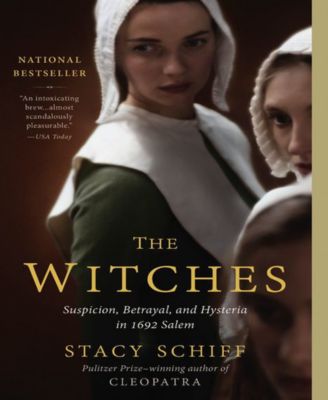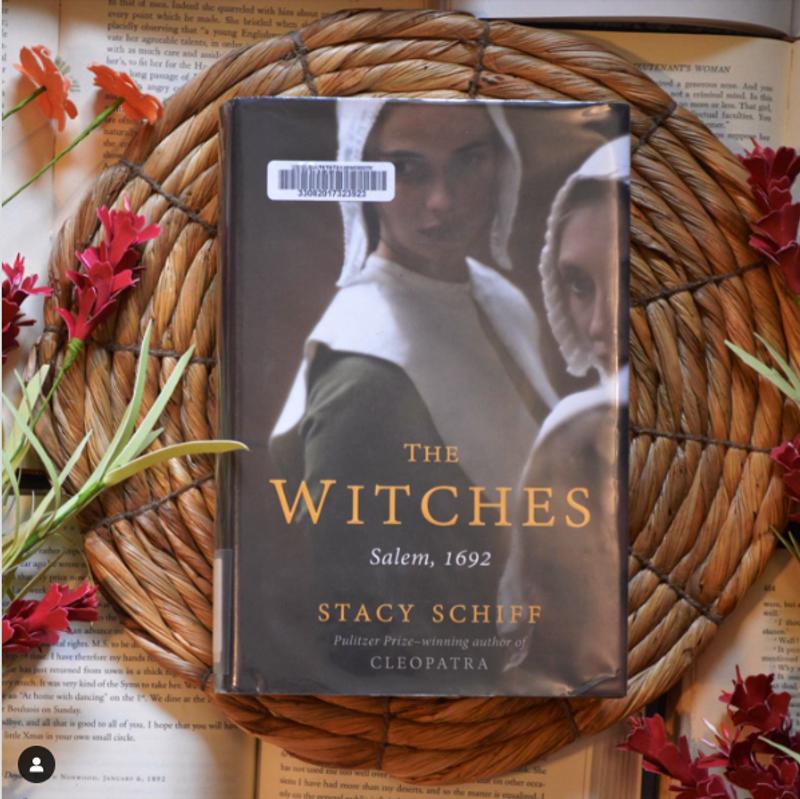The Witches- Salem, 1692 by Stacy Schiff
Product details
Web ID: 3304303Very Informative & Engaging
There was a lot of information presented here that I hadn’t known about previously. Schiff has a great way of narrating this information in a way that is engaging and not dry at all.
Recommends this product

Customer review from barnesandnoble.com
Fills in Gaps in Knowledge, but Can Be Dense
Book Review — “The Witches: Suspicion, Betrayal, and Hysteria in 1692 Salem” by Stacy Schiff (2016, @hachetteus) Categories: Nonfiction, US History, 17th Century, Puritanism, Witches and Witch-hunts Ratings: 3.25 on GR (20k ratings), my rating 3 stars ✨ My Summary + Thoughts ⤵️ Presented by a Pulitzer Prize-winning author, this book is a lengthy exposition of what scholars and historians know and theorize about the infamous Salem Witch Trials of the 1690s. In the colonial Massachusetts lands, the witch trials resulted from a town’s mass hysteria involving people claiming possession by devil or knowledge of those working with demonic forces. Puritan sensibilities made this accusation detrimental to one’s reputation… and eventually, their lives and freedom. Topics this book substantially covers: • Salem: what was the town like? • Church + Religion: What was its importance in Salem and how did town politics get involved in the church? • Members of Community: Relevant people such as prominent families, those afflicted with bewitching, those accused of witchcraft, the authorities + ministers, skeptics. • The Bewitching: How the first young girls acted and theories held by community, Tituba’s involvement, getting info about the accused from known people to strangers from afar • Accused: interrogators/investigators, jailing and its conditions, trial and jurors + accusations & defenses • Symbols: Things the puritans described as signs of guilt or trouble, including their elaborate stories of the accused’s antics and seeing black cats, red books, brooms, different types of animals, etc. • Hysteria & Sociology: the social contagion + mass hysteria of the witch-hunt and high profile cases. Some theories on why this happened. And much more. The book fills in gaps and bridges material with details contextualizing the trials. Anything from pointing out influences of feuding families to describing PTSD from Indian attacks, the book provides some padding to the sources. At some points, it’s a bit of a slog because it takes a lot of winding away from the point it’s making, but in all, a decent collection of info presented in a narrative style.
Recommends this product

Customer review from barnesandnoble.com
Dense and difficult to read
My book club tried reading a nonfiction book for a change, and this was the wrong one to start with. Schiff wrote this book as if she were trying to meet a lengthy word limit. Most sentences included an abundance of adjectives that made it extremely difficult to get through.

Customer review from barnesandnoble.com
Complex and Confusing
It has taken me over a year to get through this book. And I am from Massachusetts. I don't know how anyone without an understanding of Massachusetts geography and colonial history would ever get through this. Schiff is comprehensive and presents her story of the trials chronologically, with flashbacks to previous events that are somehow relevant and with asides that spell out relationships among the accused and the accusers, but without always being clear why these relationships will be important when she introduces the material. She mentions Salem village (the principal site of the alleged bewitching) and Salem City, Andover, Boston, Cambridge and even Methuen, But she never explains to the readers in one place the geographical relationship of these locations to each other. She focuses on Puritans who are the principal organizers of the trials and Anglicans and one important Quaker, but she does not explain the religious differences that are relevant for understanding life in the Bay Colony. As events spiral out from the Parris family, it is difficult to keep track of the various clergy who participate in and whose families are allegedly afflicted in the course of the year. We learn early on (I think) that the Mathers are important but unless the reader pays very close attention, it is difficult to keep them straight unless you know the roles of Increase and Cotton Mather in New England history. Likewise, in flashbacks, it is difficult to keep straight the relationship of those events to the periods of leadership of Andros, Phipps and Stoughton.) The judges do come across more clearly. Schiff does give us a sense of how confusing a time for those who lived through it by making the events confusing for us. The best part of the book is the last chapter when the author presents a coherent theory of the witch trials and their longer term implications.

Customer review from barnesandnoble.com
Tough to get through
I found this book tough to read and I had a hard time keeping track of many of the characters. I did learn a lot, but regret that I did not do more research before buying this book. I'm sure there are better books on the topic.

Customer review from barnesandnoble.com


